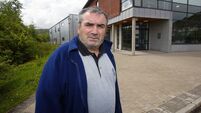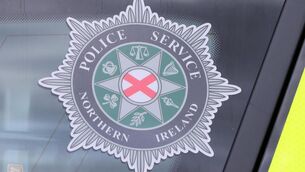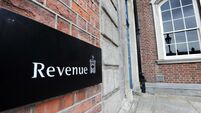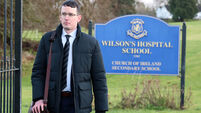Irish Army showcases €50m ‘digital’ battlefield kit
More than €50m worth of equipment was on show in an exercise on the Cork/Limerick/Tipperary border, while many of the troops taking part were equipped with iPads, 3G and 4G encrypted phones, and video cameras which have night-time capabilities.
The exercise also included troops from Sweden and Estonia, together with Norwegian and Latvian troops, all from the EU-controlled Nordic Battle Group.
During the simulation, the troops had to defend refugees who were fleeing a conflict sparked by a province’s attempt to break away from a fictional state.
In reality, this is happening in several parts of the world at present and the NBG has been formed as a rapid reaction force which can be deployed anywhere in the world within 10 days with UN approval, especially to protect civilians.
The Irish Army has been working on the hi-tech capabilities for two years. The iPads are more robust than the normal design and have been adapted to work in temperatures ranging from -30 to +30 degrees, meaning they could be deployed anywhere from the Arctic to Africa.
The Irish element in NBG is the Istar (Intelligence, surveillance, target acquisition, and reconnaissance) Taskforce, which is operating the technology.
All battlefield communications are sent immediately to a central computer system which allows an iIntelligence officer to decipher what is going on and how to react at a far quicker speed than with conventional methods.
NBG force commander Colonel Tobjorn Larsson said he was “absolutely impressed”, and said the technology would prove invaluable, especially on humanitarian missions.
Lynch Camp at Kilworth, Co Cork, was the headquarters for the operation, while the opposing forces were advancing from around 40km away in the Ballyhoura Mountains in Co Limerick and from forest positions near Kilcoran, Co Tipperary.
A total of 188 troops were deployed, the bulk of whom were soldiers from Collins Barracks, Cork.
They were backed-up with a number of 21-tonne MRV’s (Medium Recce Vehicles) armed with a range of guns; Mowag armoured personnel carriers; and an Air Corps helicopter.
At the Kilworth command centre, Intelligence Officer Captain Stephen Molumphy, the well-known Waterford senior hurler, and his team were assessing loads of digital information passed from colleagues on the ground, who were monitoring “aggressor forces”.
The exercise, which is continuing today, (Wed), is part of the week-long national certification course which the Irish troops will have to complete to enable them to deploy with the EU force.
As part of this, they will spend a further two weeks in Sweden in November. By next January, they will be ready to deploy if called upon by the EU and the UN.
The Irish charity Goal has dispatched an emergency response team to northern Iraq to assess how best the aid agency can support some of the hundreds of thousands of Iraqis who have been displaced by recent violence there.
Approximately 500,000 people were forced to flee their homes in the northern city of Mosul in recent days, following an offensive launched by the radical Islamic militant group, the Islamic State in Iraq and the Levant.
The terrorist organisation, formed last year as a successor to al Qaeda. Estimates of Isis numbers range from 7,000 to 10,000. Its rank and file members are drawn from fighters who were previously with al Qaeda, some former Ba’athists and soldiers of the Saddam-era army.
Many of those who have fled from the ISIL onslaught are currently waiting at border points to cross into the relatively stable and secure Kurd-controlled region to the north of the country.
The majority of the displaced people are reported to be without adequate access to food, water, and shelter.
The Goal team is undertaking a needs assessment of displaced communities who have been forced by the conflict to relocate to Erbil Province to determine the most pressing requirements on the ground and how best to respond.
Almost 5,000 people have been killed and 1,000,000 displaced by conflict in Iraq in the past six months.











